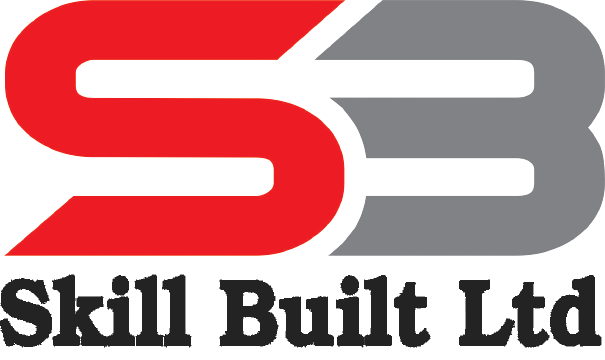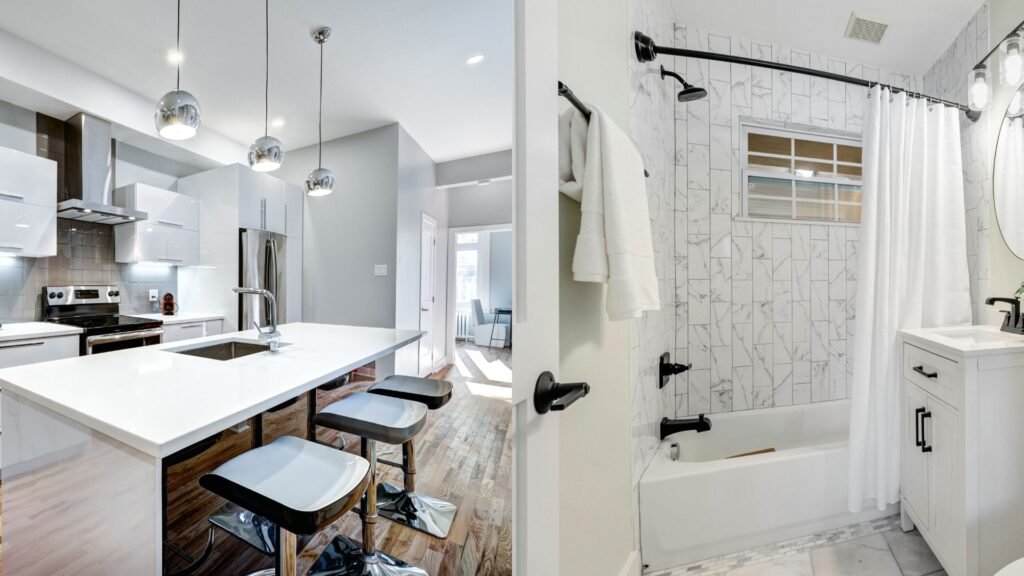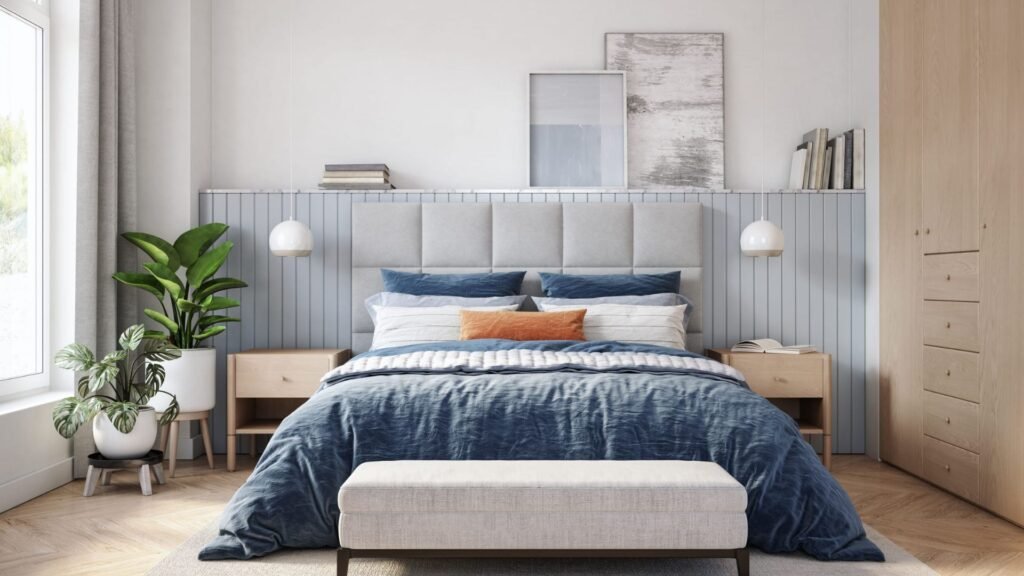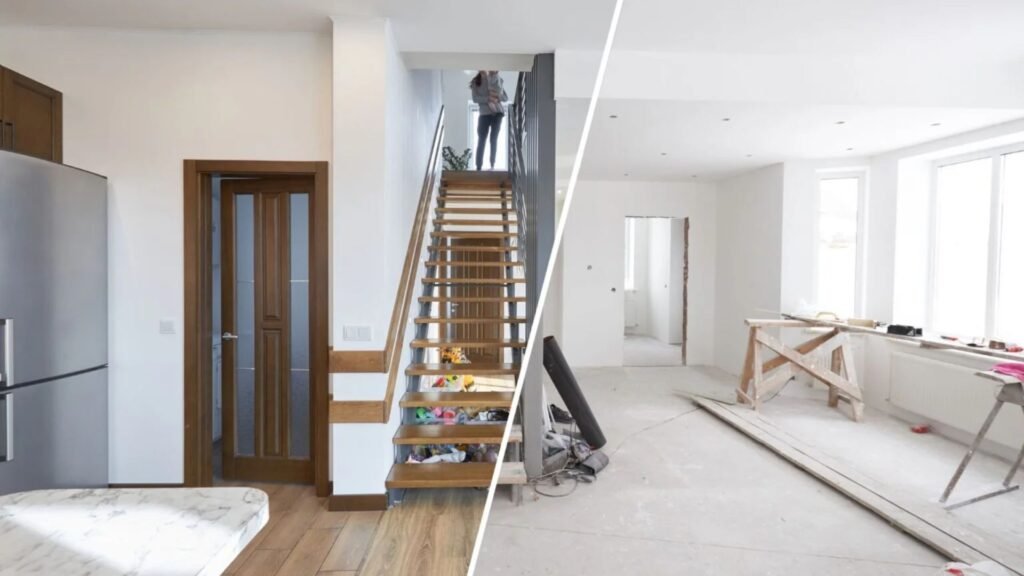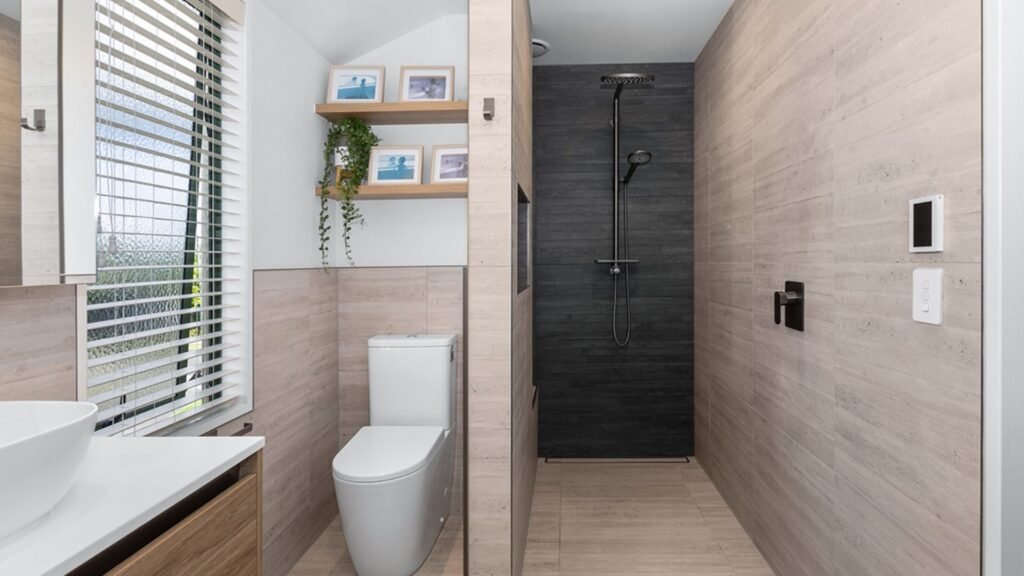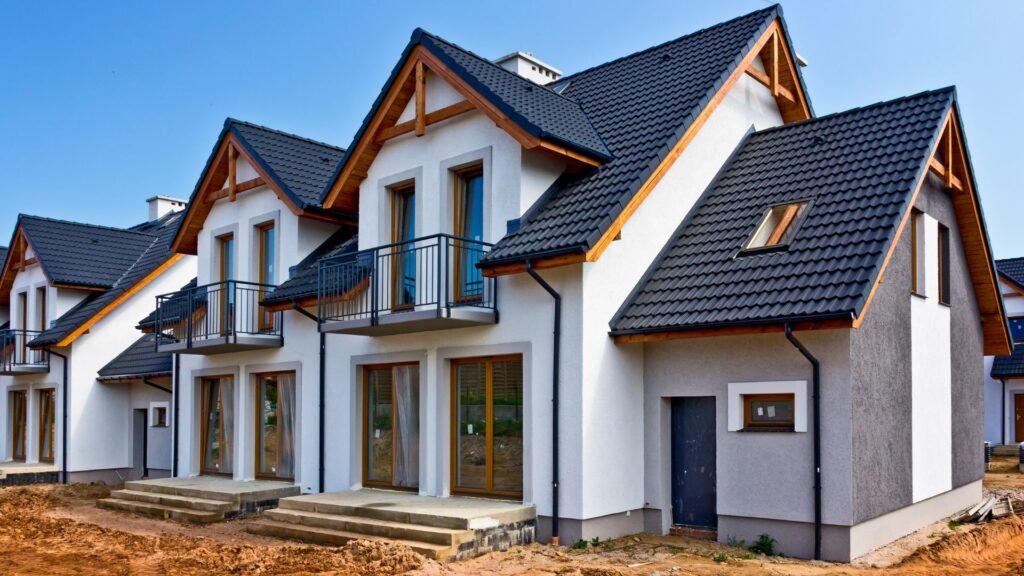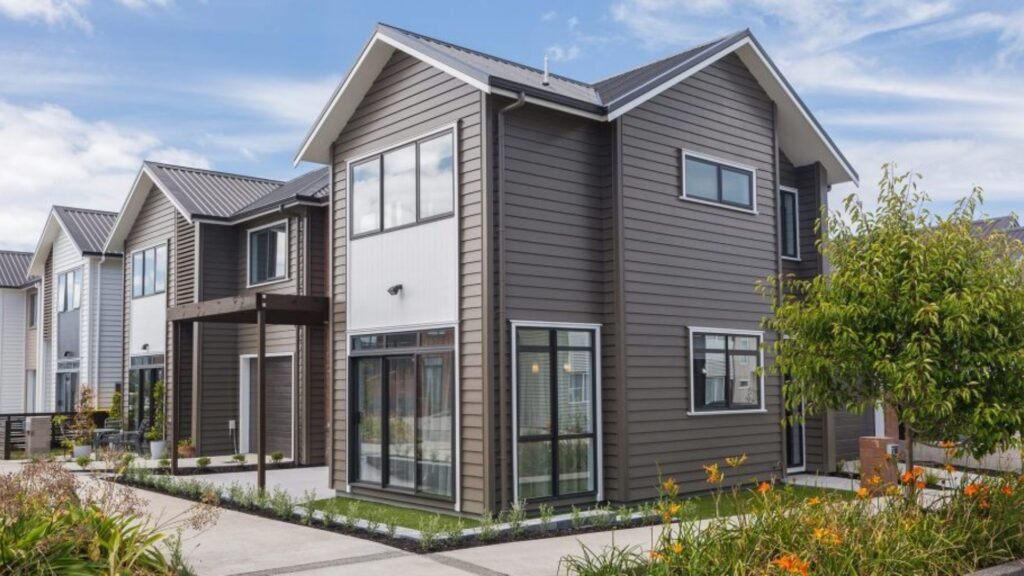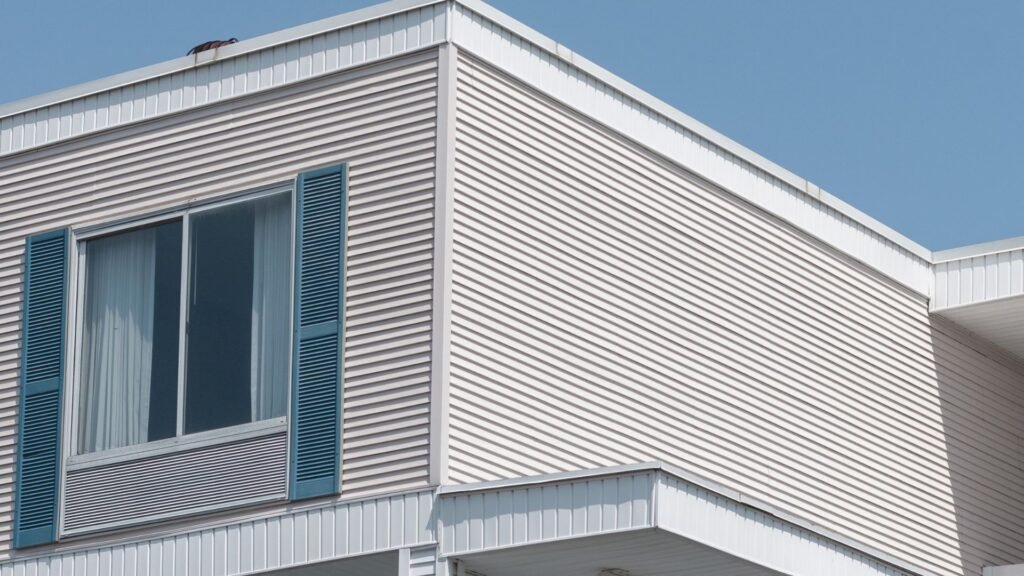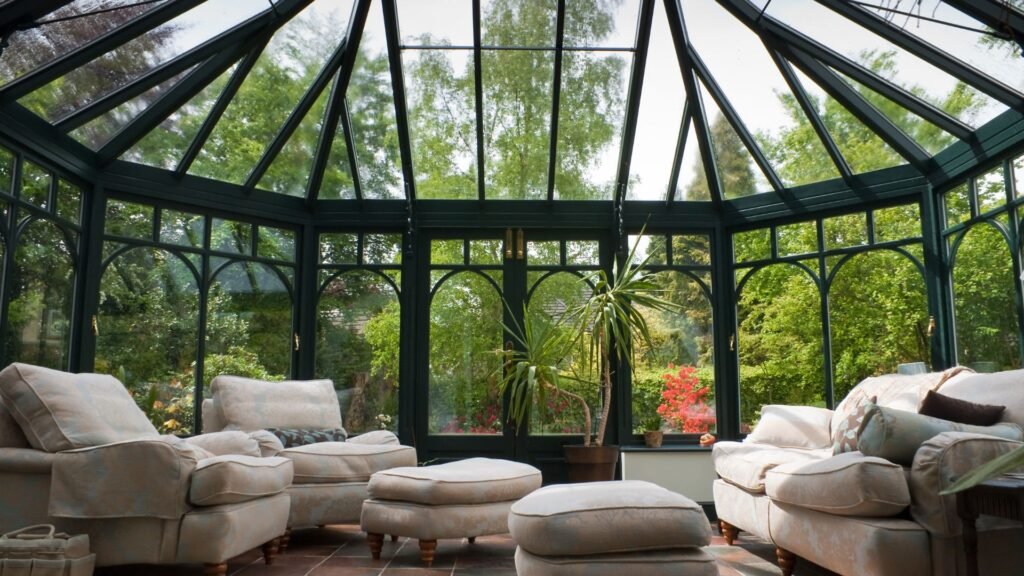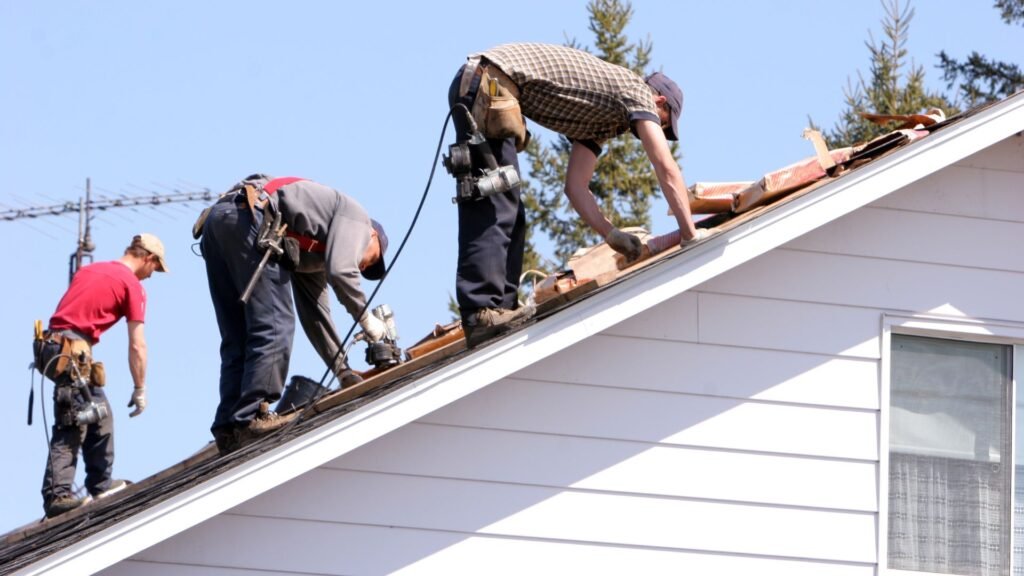Welcome to your guide on kitchen and bathroom renovations in NZ, where style, function, and smart choices come together to transform your home. Whether you’re dreaming of a modern kitchen with clean lines and open spaces or a bathroom that finally feels like a peaceful retreat, renovations can make a big impact. But before picking paint colors or tiles, it’s important to understand what goes into a successful renovation in New Zealand. From planning and budgeting to design trends and council approvals, this post will walk you through everything you need to know, without the fluff or jargon.
Kitchen and bathroom renovations in NZ involve updating layouts, improving functionality, and enhancing property value. Common steps include planning your design, setting a budget, hiring licensed professionals, and meeting local council requirements. Popular trends in New Zealand include open-plan kitchens, walk-in showers, energy-efficient fixtures, and natural materials.
Table of Contents
Why Renovate Your Kitchen Or Bathroom?
Renovating your kitchen or bathroom isn’t just about giving your home a fresh look—it’s about making your space work better for your daily life. These two areas are the most used rooms in any house, and over time, they can start to feel outdated, cramped, or inefficient. Whether you’re planning to stay long-term or sell in a few years, updating your kitchen or bathroom is one of the smartest home improvement decisions you can make. Here’s why:
Improved Functionality And Comfort
An older kitchen or bathroom often comes with design flaws: poor layout, lack of storage, or fixtures that no longer serve your needs. Renovating gives you the chance to fix these issues. Want more counter space? Need better lighting? A new layout can make your kitchen easier to cook in and your bathroom more relaxing to use. Imagine having a kitchen island where everyone can gather, or a bathroom with enough room for both storage and style. It’s not just about looks, it’s about making the space feel good to use.
Increase In Property Value
A well-designed, modern kitchen or bathroom adds real value to your home. In New Zealand’s competitive property market, these upgrades often give you a strong return on investment. Potential buyers are drawn to homes that don’t need immediate repairs or updates. Even if you’re not selling soon, knowing your renovation adds long-term value gives peace of mind. It shows that you’re maintaining your home properly, and that matters.
Better Energy Efficiency And Water Usage
Older kitchens and bathrooms often have outdated appliances, taps, and fittings that waste energy and water. A renovation is your chance to switch to water-saving toilets, energy-efficient dishwashers, and LED lighting. These upgrades reduce your utility bills and lower your environmental impact. With growing awareness around sustainability, many NZ homeowners now see eco-friendly upgrades as a must, not a luxury.
Modern Lifestyle Fit
How we live has changed. Families want open-plan kitchens that flow into the living space. Ensuite bathrooms are now expected in most modern homes. Renovating helps your home match how you actually use it. Whether it’s cooking while talking to your kids or having a walk-in shower that’s easier to access, a renovation can adapt your home to your lifestyle, not the other way around.
Kitchen and bathroom renovations are about more than style, they’re about comfort, practicality, and future-proofing your home. When planned right, they improve how your home looks, feels, and functions every day.
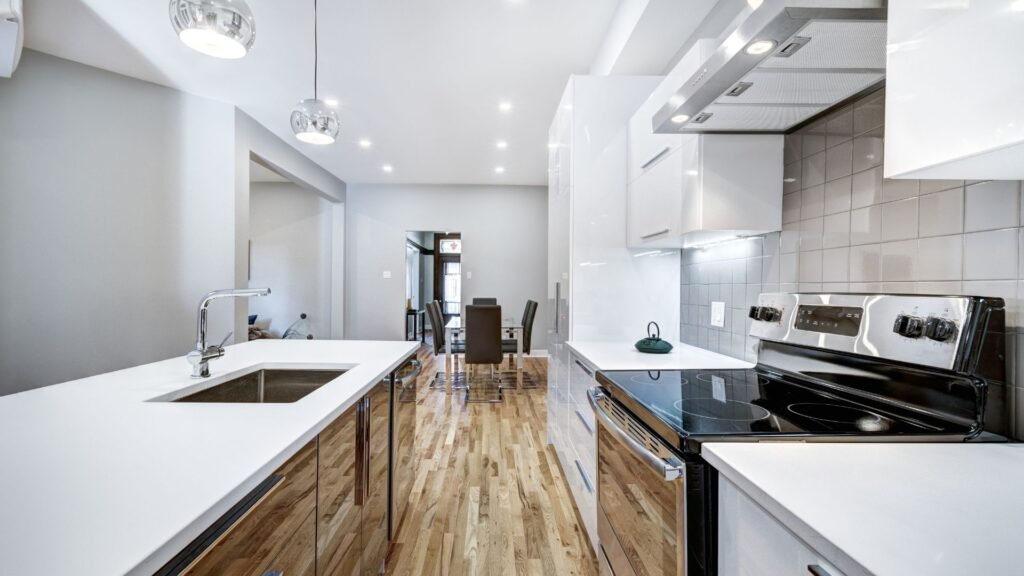
Understanding The NZ Renovation Landscape
When planning a kitchen or bathroom renovation in New Zealand, it’s important to understand the unique factors that influence how renovations are approached in this part of the world. From strict building codes to climate considerations and popular design trends, New Zealand’s renovation landscape comes with its own set of rules and style preferences. Whether you’re upgrading a small city apartment or modernising a rural family home, knowing what to expect can save you time, money, and stress.
What Makes NZ Renovations Unique
Renovating in New Zealand isn’t just about picking paint colours or new appliances. There are real-world factors that influence every project.
Climate and Weather Conditions
NZ’s climate varies widely between regions. Homes in Auckland face high humidity and rainfall, while areas like Central Otago deal with dry, cold winters. These differences impact material choices, insulation requirements, and ventilation systems. For example, bathrooms in wetter regions need powerful extraction fans and waterproof finishes to avoid mould.
Strict Building Codes
New Zealand has some of the most rigorous building standards in the world, especially following past issues with leaky homes. Any structural work or plumbing changes must meet the NZ Building Code. This includes proper waterproofing in wet areas, certified electrical work, and durable materials that can handle NZ’s conditions.
Council Consent And Compliance
Local councils require building consent for many types of renovations, including moving plumbing or making structural alterations. Even changes that seem minor, like installing a new window, can trigger consent rules. Failing to get the right approvals can delay your renovation or lead to costly penalties. Always check with your local council before starting work.
Popular Styles Across NZ Homes
New Zealand homes come in a wide range of architectural styles, and renovations often need to respect or enhance those styles.
Modern
Clean lines, minimalist design, and open-plan living dominate modern NZ renovations. Think matte black fixtures, stone benchtops, and integrated appliances. Many modern renovations also focus on indoor-outdoor flow, especially in warmer regions.
Coastal
In beachside areas like the Coromandel or Bay of Plenty, coastal style is common. Light tones, natural wood, soft textures, and wide windows help create a relaxed, breezy feel. These homes often prioritise durable materials that resist salt air and moisture.
Heritage And Villa Homes
Older homes, especially in Wellington and Dunedin, often feature classic details like high ceilings, timber floors, and sash windows. Renovating these homes requires a balance between preserving character and adding modern convenience. Care must be taken with materials, permits, and layout changes to maintain their charm and value.
Trends In NZ Home Renovations
Renovation trends in New Zealand reflect a mix of practical upgrades and style shifts that respond to modern living and environmental awareness.
Eco-Conscious Materials
More homeowners are choosing sustainable options like bamboo flooring, recycled timber, and low-VOC paints. Water-saving fixtures, energy-efficient lighting, and improved insulation are becoming standard. These choices don’t just lower energy bills, they appeal to buyers looking for future-proof homes.
Smart Storage Solutions
With rising housing costs, many NZ homeowners are working with smaller spaces. Clever storage has become essential, especially in kitchens and bathrooms. Pull-out pantries, hidden cabinets, and wall-mounted shelving help maximise every square metre without compromising style.
Technology Integration
From sensor taps to smart lighting, tech is entering the renovation scene. Bathrooms now feature digital mirrors and underfloor heating with app controls, while kitchens include touch-open cabinets and voice-activated lighting. These features boost both convenience and home value.
Understanding these NZ-specific factors will help you make better renovation decisions and avoid common missteps. The more you tailor your renovation to suit local conditions, design preferences, and regulations, the smoother the process, and the better the results.
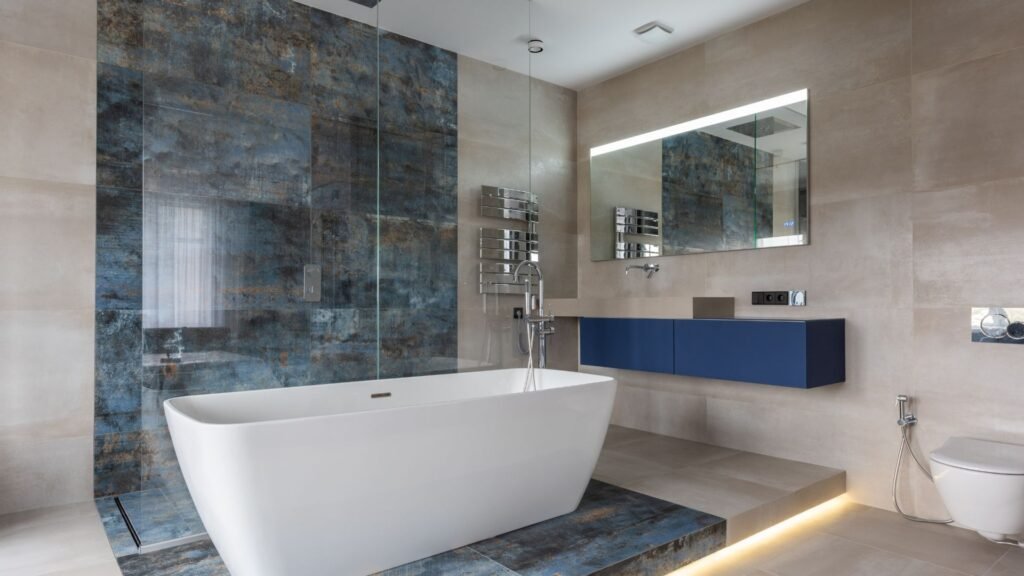
Planning: Where To Start
Renovating your kitchen or bathroom in New Zealand is a big step, and getting the planning right can save you time, stress, and money. Before you pick paint colors or start browsing tile samples, take time to set clear goals, understand your limits, and know the legal side of things. Here’s how to start planning your renovation the smart way.
Define Your Goals And Priorities
Ask yourself why you want to renovate. Is your kitchen hard to work in? Is your bathroom outdated or lacking storage? Are you preparing to sell your home and want to increase its value?
Defining your main goal early helps you stay focused during the process. For example:
- If resale is the goal, go for clean, modern finishes that appeal to buyers.
- If storage is the problem, look for custom cabinetry or space-saving designs.
- If you’re after better flow, consider changing the layout to open up your space.
Be clear on what matters most so you don’t end up wasting money on things that won’t solve your core issues.
Set A Realistic Budget Range
Budgets make or break renovations. You don’t need an exact figure down to the dollar, but you do need a clear range. A typical kitchen in NZ can cost between $15,000 and $50,000, while bathroom renovations often fall between $10,000 and $30,000.
Think about
- How much you’re comfortable spending
- How long you’ll stay in the home
- The return on investment if you plan to sell
Always include a buffer of at least 10–20% for unexpected costs. Things like hidden water damage or changes to your original plan can pop up fast.
Understand Council Consents And Compliance
In many New Zealand cities, especially Auckland, Wellington, and Christchurch, there are building regulations you must follow. Not every renovation needs council consent, but you’ll likely need it if you.
- Move plumbing or electrical systems
- Remove load-bearing walls
- Change the structure of your home
- Create a new window or doorway
Failing to get consent can result in fines, delays, and problems selling your home in the future. Check with your local council before you begin. Many renovation companies can help you through this process, but you’re responsible for making sure the work is legal.
When To DIY Vs. When To Hire Pros
It’s tempting to try and save money by doing it yourself, but not every task is suited for a DIY approach. Painting walls or replacing cabinet handles? Go for it. Rewiring, plumbing, or waterproofing? Leave it to the licensed experts.
Here’s a simple rule:
If it involves water, electricity, or structural changes, hire a professional.
The benefit of working with pros isn’t just peace of mind, it’s also about speed, quality, and resale value. Bad DIY jobs can be costly to fix and may even void your home insurance. If your project is small, you can handle some parts on your own while hiring trades for the more complex tasks. Just be honest about your skills and your schedule. Renovations always take longer than expected if you’re not experienced.
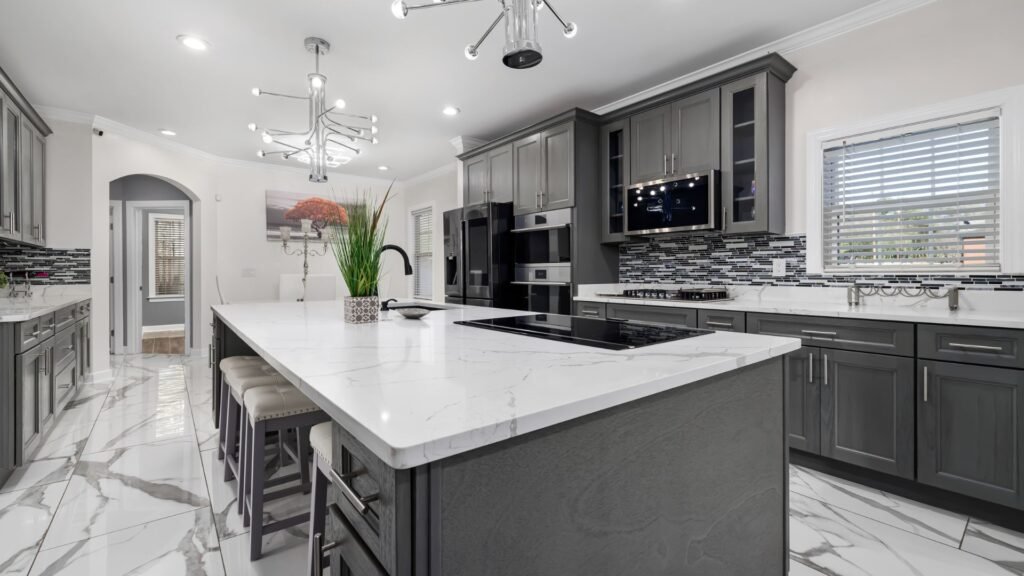
Design Tips That Work For NZ Homes
A great renovation doesn’t just update your space, it makes it more livable, comfortable, and practical. Whether you’re in Auckland, Christchurch, or a small town in the South Island, thoughtful design choices can make your kitchen and bathroom both beautiful and functional. Below are practical design tips tailored for New Zealand homes, keeping in mind local styles, climate, and the way Kiwi families use their spaces.
Kitchen design
Open-plan kitchens have become the norm across many NZ homes, and for good reason. They make your space feel larger and more inviting. Opening up the layout allows for better movement, more natural light, and easier communication between the kitchen, dining, and living areas. This setup works well in both new builds and villa renovations, especially when paired with large sliding doors or skylights that bring in daylight.
Energy-efficient appliances are another smart choice. With rising power costs in New Zealand, installing energy-rated fridges, ovens, and dishwashers helps you save in the long run. Plus, many of today’s energy-saving models don’t compromise on performance or design.
Storage matters, too. Modern kitchens in NZ are embracing smart storage solutions like soft-close drawers that reduce noise and wear, pull-out pantries that use space more efficiently, and multi-purpose island benches. Islands don’t just add workspace, they often double as dining areas or gathering points during social events. If your layout allows, they’re worth the investment.
Bathroom design
Bathrooms in New Zealand are often on the smaller side, especially in older homes. That’s why smart design is crucial. Walk-in showers have become a favorite among homeowners, they’re easy to clean, look modern, and work well in compact spaces. Combine these with floating vanities to create the illusion of more room. The open floor underneath gives your bathroom a cleaner, less cramped feel.
Underfloor heating is another feature gaining popularity, especially in colder regions like Otago or Canterbury. It removes the chill from tiled floors and adds comfort during winter mornings. It’s more affordable than many people think and doesn’t take up visible space.
Safety and durability matter just as much as looks. Non-slip tiles are a must, especially in family homes or for older adults. Proper waterproofing should never be skipped, it prevents long-term damage and protects your investment.
For small homes and apartments, compact bathroom designs can still be stylish. Choose wall-mounted tapware, slim storage cabinets, and corner sinks to maximize every inch. In tight spaces, mirrors and light colors can also make a big difference in how the room feels.
By focusing on functionality and comfort, these kitchen and bathroom design tips not only match how Kiwis live, they also stand the test of time. If you plan with care and design for how you actually use your space, your renovation will serve you well for years to come.
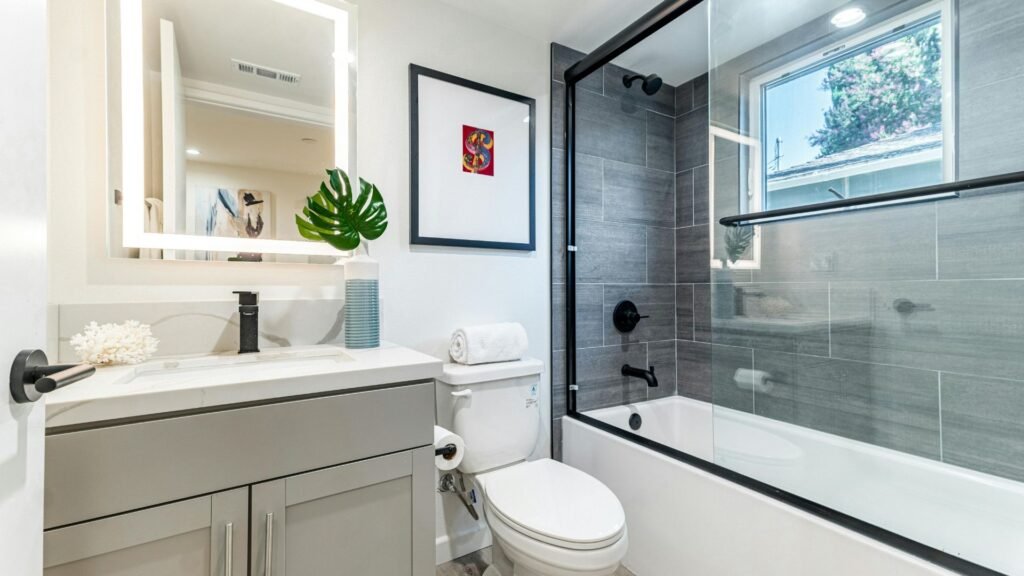
How Much Do Renovations Cost In NZ?
Renovating your kitchen or bathroom in New Zealand is a major investment, and it’s important to know what you’re getting into cost-wise before making any decisions. The price can vary widely depending on the size of the space, the materials you choose, and whether you’re simply updating the look or changing the entire layout. Let’s break it down so you can plan with confidence.
Average Price Ranges For Kitchens And Bathrooms
A typical kitchen renovation in NZ can cost anywhere between $15,000 and $50,000. If you’re just upgrading surfaces, like new benchtops, cabinets, or appliances, you may land at the lower end of that range. Full redesigns with custom cabinetry, plumbing changes, and premium finishes will push you closer to the higher end.
For bathroom renovations, expect to pay around $10,000 to $30,000. A basic upgrade, such as new tiles, tapware, and a fresh vanity, might cost under $15,000. But if you’re moving fixtures, adding underfloor heating, or installing luxury fittings, the total can climb quickly.
These ranges reflect most mid-tier renovations in major cities like Auckland, Wellington, and Christchurch. Prices can differ slightly based on local labor rates and access to materials.
Factors That Increase Costs
Not all costs are obvious upfront. Here are some common reasons your renovation budget might stretch:
- Structural changes: Removing or altering walls, especially load-bearing ones, requires engineering input and council consent, which adds time and cost.
- Plumbing relocation: Moving sinks, showers, or toilets often means new pipework and can involve cutting into floors or walls.
- Custom or imported materials: Ordering custom-sized vanities, imported tiles, or designer tapware can add both material and shipping costs.
- Old wiring or plumbing: If your home is older, you might discover outdated infrastructure that needs to be upgraded to meet code.
Always build in a buffer of at least 10–15% for unexpected costs.
Tips To Stay On Budget Without Cutting Corners
You don’t have to spend a fortune to get great results. Here are some practical ways to stay within your budget:
- Plan everything in advance: Make all major decisions, layout, fittings, finishes, before starting. Changes mid-project usually cost more.
- Choose ready-made over custom: Off-the-shelf vanities and flat-pack cabinetry can cut costs without sacrificing quality.
- Keep existing layouts: Keeping plumbing and electrical points in place avoids expensive rewiring or re-plumbing.
Focus on value: Spend more where it matters, like benchtops and waterproofing, and save on décor items that are easy to update later.
Talk openly with your contractor about budget limits. A good builder will help you prioritize without compromising on quality.
When Spending More Makes Sense
While it’s smart to save where you can, there are times when spending more is the right call.
- For resale value: A well-designed kitchen or bathroom can boost your home’s market appeal. Buyers notice modern layouts and high-quality finishes.
- For comfort and convenience: Soft-close drawers, easy-to-clean surfaces, and good lighting improve daily use and satisfaction.
- For durability: Investing in quality waterproofing, tiles, and fixtures means fewer repairs and replacements over time.
Think long-term. A slightly higher upfront cost can lead to savings in the years ahead, and a space you actually enjoy using.
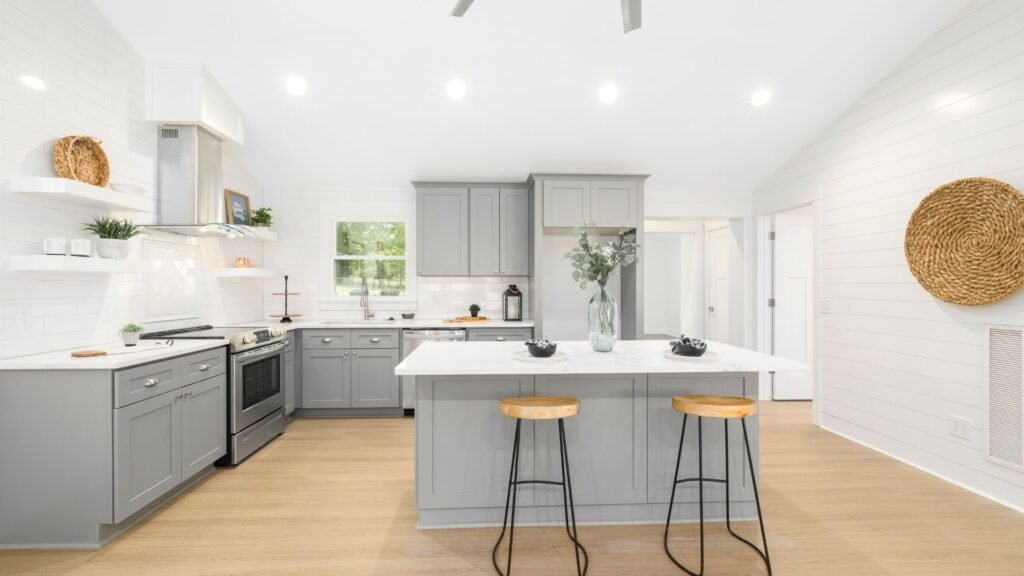
Timeline: How Long Does It Take?
Renovating a kitchen or bathroom in New Zealand is exciting, but it’s important to know how long it may actually take. Whether you’re updating a tired kitchen or revamping a small bathroom, having a clear understanding of the timeline can help you plan better, avoid stress, and keep things moving smoothly. Let’s break down the average timeframes, the common delays, and how to stay on track from day one.
Typical Timeframes For Each Type Of Renovation
The duration of your renovation depends on the size of the space, the level of changes, and how well things are planned. Below are common timeframes for standard kitchen and bathroom renovations in NZ.
Kitchen Renovation
- Small updates (e.g., new benchtops, splashbacks, cabinet refacing): 1 to 2 weeks
- Full remodel (including layout changes, electrical/plumbing work): 4 to 6 weeks
Bathroom Renovation
- Cosmetic upgrades (e.g., replacing fixtures, repainting): 1 to 2 weeks
- Complete rebuild (including tiling, waterproofing, layout change): 3 to 5 weeks
If both the kitchen and bathroom are being renovated at the same time, expect the project to take longer, usually 6 to 8 weeks total. Coordinating trades and material delivery becomes more complex with multiple rooms involved.
Delays To Watch Out For
Even with solid planning, delays can happen. Understanding the most common causes helps you reduce risk and manage expectations.
- Material Availability: Imported tiles, fixtures, or appliances may be delayed due to shipping times. Ordering in advance helps prevent downtime.
- Weather Conditions: Wet or cold weather can slow work, especially if outdoor access or structural work is involved.
- Consent Approvals: If your project requires building consent, this can add several weeks before you even start. Always check local council requirements early.
- Trades Scheduling: Plumbers, electricians, and tilers are often booked weeks in advance. Aligning their schedules is key to avoiding unnecessary gaps between phases.
- Scope Creep: Changing your mind mid-project or adding extras can disrupt timelines and stretch your budget. Stick to the original plan where possible.
Tips For Staying On Track
Want to keep your renovation moving without stress? Here are some practical tips:
- Make Decisions Early: Finalise layout, fittings, tiles, and appliances before work begins. This helps builders plan efficiently and avoids last-minute delays.
- Order Materials Ahead Of Time: Ensure all materials are delivered before they’re needed, especially anything custom-made or imported.
- Work With A Project Manager: If you’re not managing the job yourself, having one person oversee timelines, trades, and deliveries makes everything smoother.
- Create A Staged Plan: Break the job into phases. For example, complete demolition and rough-in work before jumping into cabinetry or tiling.
- Maintain Open Communication: Check in regularly with your builder or team. This helps solve small issues before they become big ones.
Knowing how long your renovation will take, and what can affect the timeline, sets you up for a smoother experience. With the right prep and realistic expectations, your dream kitchen or bathroom in NZ can be completed on time and on budget.
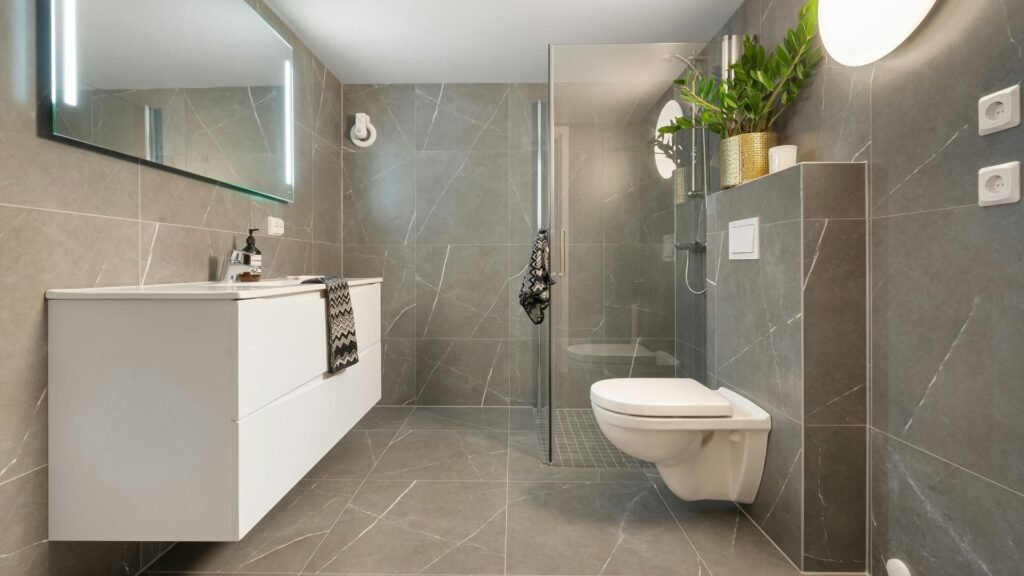
Working With Renovation Professionals
Renovating a kitchen or bathroom isn’t just about choosing tiles or paint colors. It’s a coordinated process that involves skilled professionals, each playing a key role in getting the job done right, on time, and within budget. Whether you’re planning a simple upgrade or a full remodel, knowing who does what and how to work with them can save you stress, time, and money.
Builders, Designers, And Project Managers: Who Does What?
Builders are responsible for the actual construction. They handle demolition, framing, structural changes, cabinetry, and installation of fixtures. A licensed builder ensures the work complies with New Zealand building codes and passes council inspections if required.
Designers focus on layout, aesthetics, and functionality. A good kitchen or bathroom designer will help you make the most of your space, recommend materials that match your lifestyle, and create a plan that fits your budget. They often provide 3D designs or renderings so you can visualize the end result before any work begins.
Project managers act as the go-between. They schedule trades, order materials, track progress, and ensure deadlines are met. You may find a builder who also handles project management, or you can hire one separately, especially useful for larger or more complex renovations.
Working with all three roles together creates a smoother experience. If you’re handling everything on your own, be prepared to juggle quotes, schedules, and follow-ups.
Questions To Ask Before Hiring
Not all professionals deliver the same results. Before hiring anyone, ask the following:
- Are you licensed and insured in NZ?
- Can I see examples of recent kitchen or bathroom renovations?
- Will you manage other trades, or do I need to coordinate that?
- How do you handle delays or unexpected costs?
- Do you offer a written quote and fixed timeline?
You should also check reviews, ask for client references, and visit completed jobs when possible. Trust is key, this person or team will be working inside your home, possibly for weeks.
What To Include In Your Contract
Don’t start any work without a detailed written agreement. A proper renovation contract should include:
- Clear scope of work
- Start and finish dates
- Payment terms and deposit details
- List of materials and finishes (with allowances if not finalized)
- Warranty on workmanship
- Dispute resolution process
Having everything in writing protects both sides and avoids confusion if things change mid-project. Never rely on verbal promises, if it’s not written down, it doesn’t count.
The Benefit Of Working With Local NZ Renovation Companies
Hiring a local NZ-based renovation team offers clear advantages. First, they understand regional building codes and council regulations, which reduces delays during consent or inspection stages. Second, they often have trusted relationships with local suppliers and subcontractors, helping you secure better pricing and faster timelines.
Local professionals also bring insight into what styles, materials, and layouts work best for New Zealand homes. Whether it’s dealing with damp conditions in coastal areas or maximizing insulation in colder zones, experience in the NZ market matters.
Plus, supporting local trades helps strengthen the community, and if issues arise after the job is done, you know exactly where to find them.
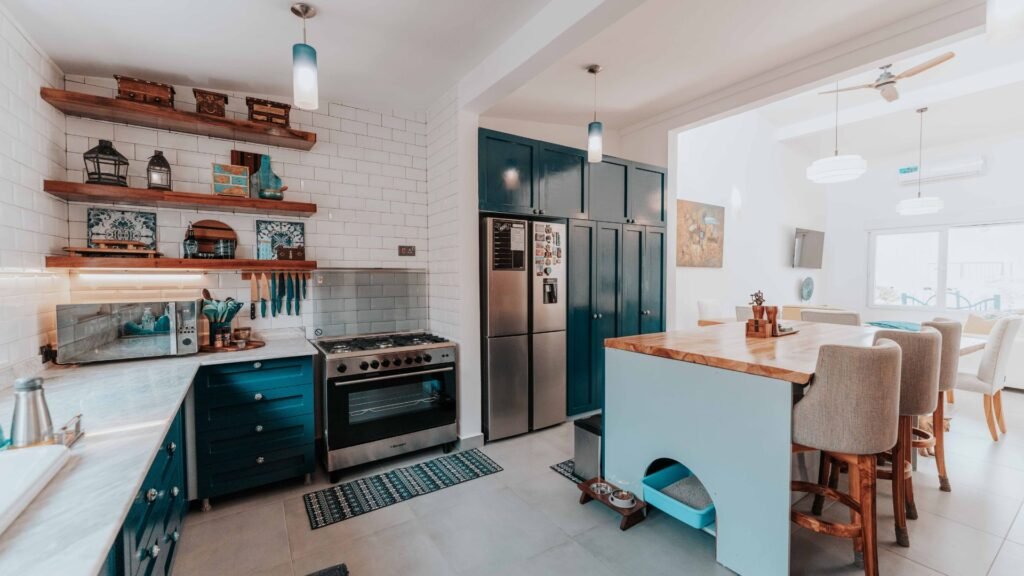
Common Mistakes To Avoid
Renovating your kitchen or bathroom is a big step, and it’s easy to make mistakes that cost you time, money, and peace of mind. Whether you’re doing a small upgrade or a full transformation, avoiding these common renovation pitfalls can save you from regrets down the line. Let’s break down what to watch out for.
Rushing Design Choices
When excitement kicks in, it’s tempting to pick tiles, benchtops, and fittings quickly just to keep things moving. But fast decisions can lead to mismatched styles, awkward layouts, or features that don’t work with your lifestyle. Give yourself time to plan your space thoughtfully. Think about how you use the room every day, cooking, storage, movement, and let that guide your design. A smart layout and cohesive design will make your renovation more functional and enjoyable.
Ignoring Ventilation And Waterproofing
Many homeowners focus on the look of a room and forget the basics, like airflow and moisture control. In bathrooms especially, poor ventilation leads to mould, peeling paint, and long-term damage. In kitchens, steam and cooking odours can linger without proper extraction. Waterproofing is just as critical. Skipping it or doing a sloppy job can cause leaks, rot, and major structural issues later on. Always invest in certified professionals for these parts of the job. It’s not just about code compliance, it’s about protecting your home.
Choosing Cheap Fixtures That Don’t Last
That budget tap or vanity might look fine today, but will it still work in two years? Cheap fixtures wear out faster, are harder to maintain, and often don’t come with warranties. You don’t need to buy the most expensive brand, but choose mid-range or well-reviewed products that are known for durability. Focus on key items like tapware, cabinetry hardware, and benchtops, these take daily wear and tear. It’s better to invest once than replace twice.
Overlooking Hidden Costs
It’s easy to budget for tiles and fittings, but what about the extras? Many people forget costs like rubbish removal (skip bin hire), building inspections, upgrading wiring or plumbing to meet code, or repairing unexpected damage once the walls come down. These expenses add up fast. Build a 10–15% buffer into your budget to handle surprises without stress. Asking your builder for a detailed quote that includes potential extras can also help avoid nasty shocks.
Avoiding these common mistakes doesn’t require luck, it just takes a bit of planning, patience, and the right advice. Take your time with each step, ask questions when you’re unsure, and always choose long-term value over short-term savings. That’s how you make a renovation worth every dollar.
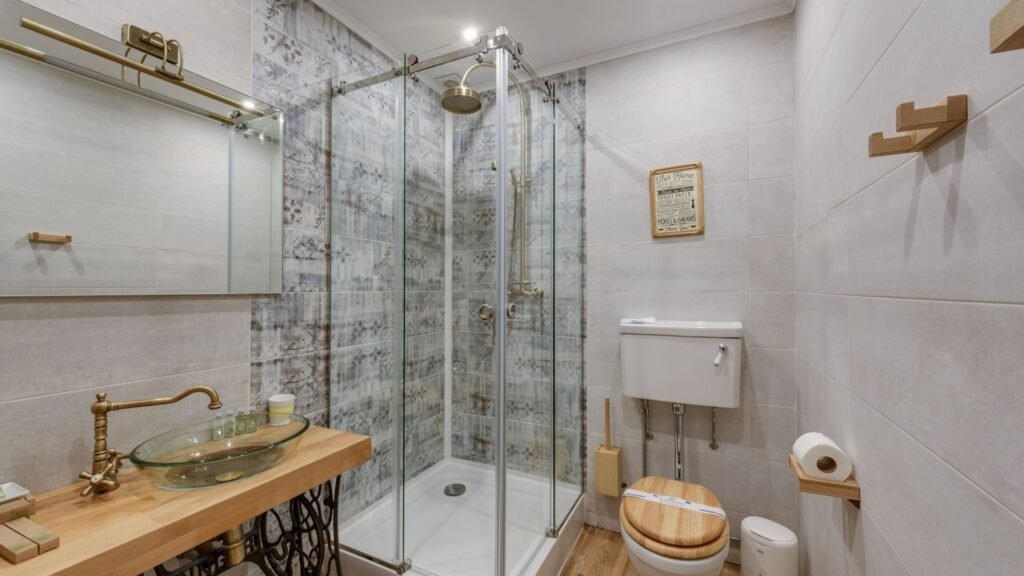
Before-And-After Inspiration From NZ Homes
Looking at real-life examples is one of the best ways to get inspired and make confident renovation decisions. Below are a few kitchen and bathroom renovation stories from homeowners across New Zealand. Each one shows what changed, why those changes worked, and how the upgrades improved their daily life, not just their house value.
Modern Kitchen Makeover In Auckland
What Changed
The original kitchen was cramped, dark, and closed off from the rest of the house. The layout had limited bench space and dated cabinetry from the early 2000s. The homeowners decided to open up the space by removing one non-load-bearing wall and adding a central island. Soft-close drawers, LED strip lighting, and a mix of matte white and timber finishes replaced the old units.
Why It Worked
By opening the space and improving the lighting, the kitchen became a hub for cooking and casual dining. The new layout made better use of the floor area, added storage, and made the entire space feel brighter and more welcoming.
Approx. Cost
$35,000 including design, demolition, cabinetry, benchtop, appliances, and installation.
Impact
The family now cooks together more often, and the kitchen island doubles as a workspace and a place for the kids to do homework. It’s not just functional, it’s the center of the home.
Compact Bathroom Upgrade In Christchurch
What Changed
This older home had a small bathroom with a shower-over-bath setup, linoleum floors, and low ventilation. The owner opted for a complete refresh: a walk-in tiled shower, floating vanity, large mirror, and underfloor heating. A skylight was also added for more natural light.
Why It Worked
Removing the bulky bathtub and choosing a clean, modern design created more floor space. The added ventilation and light solved mold issues and made the space feel much larger than it actually is.
Approx. Cost
$22,000 including waterproofing, tiling, new fittings, electrical work, and underfloor heating.
Impact
The homeowner says mornings feel less rushed now, with a warm floor underfoot and more space to move around. The room also feels like a small luxury retreat, perfect after a long day.
Open-Plan Kitchen Revamp In Wellington
What Changed
Originally separated from the living area, the kitchen felt isolated and outdated. The homeowners removed two walls to create an open-plan living-dining-kitchen zone. New appliances, a stone benchtop, and recessed lighting added a sleek, modern touch.
Why It Worked
The open-plan setup fits today’s lifestyle better, perfect for entertaining or keeping an eye on the kids. It also brought more natural light into the kitchen, which helped brighten up the entire home.
Approx. Cost
$42,000 including structural work, kitchen fit-out, lighting, and permits.
Impact
Hosting dinner with friends is now effortless. The homeowners feel more connected during meals and everyday routines, and guests often compliment the seamless design.
These stories prove that the value of a renovation goes beyond resale, it changes how people live in their homes every day. Whether you’re working with a small bathroom or a boxed-in kitchen, smart upgrades can make a big difference in comfort, mood, and function.
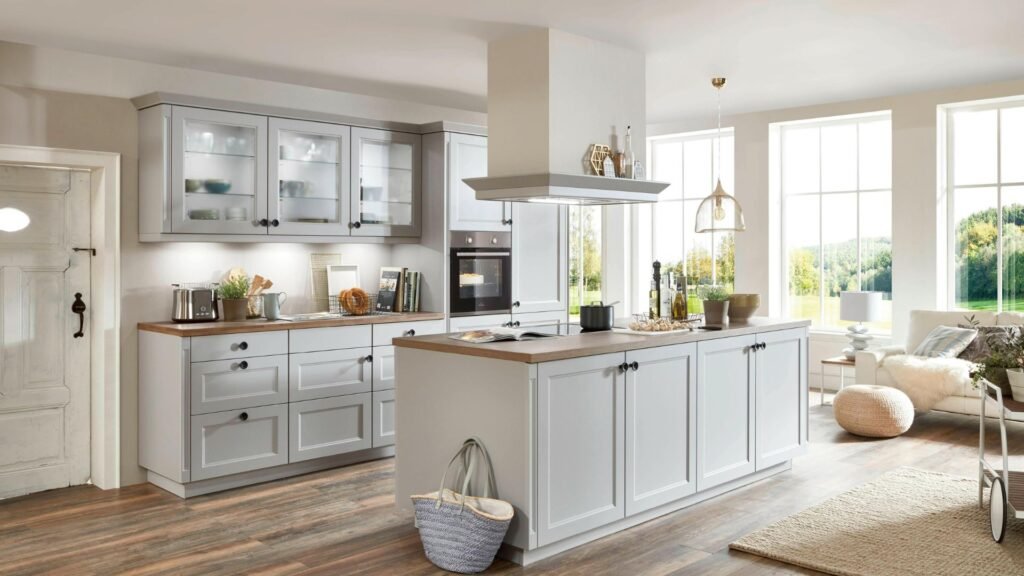
Sustainable Renovation Choices
Renovating your kitchen or bathroom isn’t just about new tiles or shiny taps. It’s also a chance to make smarter, more sustainable choices that reduce your impact on the environment, and save money in the long run. Whether you’re focused on lowering your water bill, reducing waste, or creating a healthier home, there are plenty of practical ways to build green. Here’s how to approach eco-friendly renovations in a way that works for everyday New Zealand households.
Water-Saving Fittings And Energy-Efficient Lighting
Upgrading your tapware, showerheads, and toilets to water-efficient models is one of the easiest ways to reduce daily water use. Look for fittings with a high WELS (Water Efficiency Labelling Scheme) rating. In most cases, these fittings work just as well, if not better, than standard ones, and they can significantly lower your water bill over time.
When it comes to lighting, switch to LED bulbs throughout the kitchen and bathroom. LEDs use up to 80% less energy and last much longer than traditional bulbs. You’ll get the same level of brightness while using less electricity.
Locally Sourced Materials And Recycled Timber
Choosing materials that are made or sourced locally helps lower carbon emissions from transport and supports NZ businesses. This might include cabinetry made by local joiners, benchtops crafted from regional stone, or tiles produced in New Zealand.
Recycled timber is another smart option, especially for vanities, shelving, or flooring accents. It adds character and durability while keeping usable materials out of landfills. Many builders and suppliers across NZ now offer reclaimed timber as part of their standard offerings.
Working With Eco-Certified Suppliers
If sustainability is a priority, look for renovation partners who are committed to the same values. Eco-certified suppliers and builders typically follow stricter guidelines around material use, waste disposal, and emissions. Certifications like FSC (Forest Stewardship Council) for wood, or ECNZ (Environmental Choice New Zealand) for other products, help ensure your choices are genuinely environmentally responsible.
Ask your builder or supplier about their sourcing policies and any certifications they carry. Even small details, like low-VOC adhesives or paints, can make a difference in indoor air quality and environmental impact.
Grants Or Support For Green Renovations In NZ
In some cases, you might be able to get financial support for sustainable upgrades. Local councils or regional agencies sometimes offer rebates for water-saving appliances, insulation upgrades, or solar installations. While these programs change from time to time, it’s worth checking with your council or visiting government websites like Energywise or Gen Less to see what’s currently available.
Even if grants aren’t on the table, some suppliers offer green financing options or discounts for choosing energy-efficient products. Don’t be afraid to ask, these offers can stretch your budget further.
Make Sustainable Choices That Last
Eco-friendly renovations aren’t just about ticking boxes, they’re about creating spaces that work better for you and the planet. By making informed choices, from lighting to materials, you can design a kitchen or bathroom that saves money, reduces waste, and adds long-term value to your home. Whether you go all-in or just start with small upgrades, every step counts.
Want a home that feels fresh, modern, and functional? Take the first step by visiting our homepage for design ideas, pricing info, and expert support.
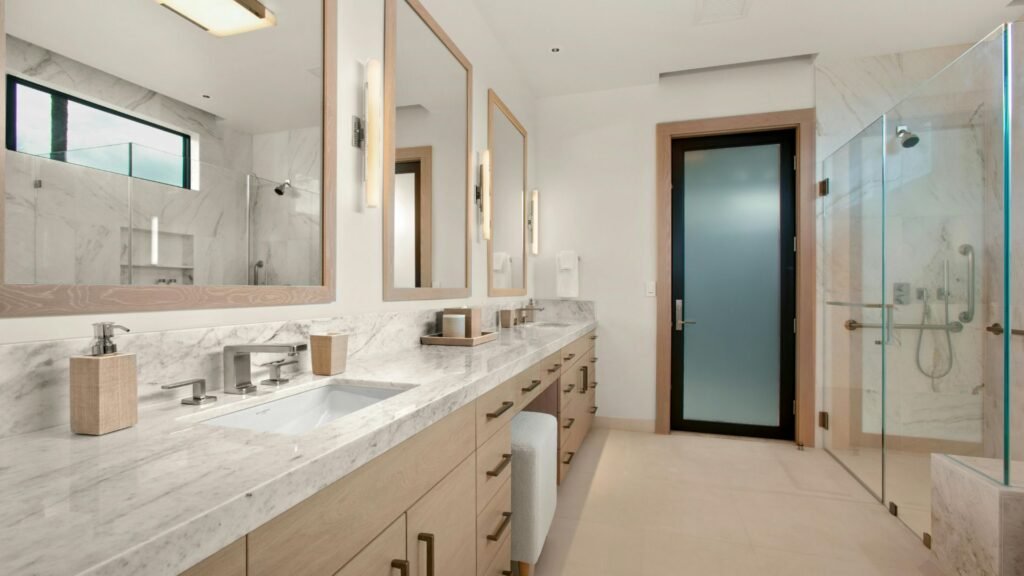
FAQs: About Kitchen And Bathroom Renovations In NZ
How much do kitchen renovations cost in New Zealand?
Kitchen renovations in NZ typically range from $15,000 to $50,000, depending on size, materials, and layout changes. Simple upgrades may cost less, while high-end finishes or full reconfigurations will raise the price.
What is the average cost of a bathroom renovation in NZ?
A basic bathroom renovation in NZ can start at $10,000, while a more extensive remodel with premium fittings can cost $20,000 to $30,000 or more. Waterproofing, tiling, and plumbing changes add to the cost.
Do I need council consent for kitchen or bathroom renovations?
Not always. If you’re moving plumbing, making structural changes, or adding new windows, consent may be required. Always check with your local council before starting.
How long does a typical kitchen renovation take?
Most kitchen renovations take 3 to 6 weeks, depending on the scope of work. Custom cabinetry or delays in material supply can add time.
How long does a bathroom renovation usually take?
A standard bathroom renovation takes 2 to 4 weeks. This includes demolition, plumbing, waterproofing, tiling, and installation.
Can I stay in my house during the renovation?
Yes, but it may be uncomfortable if both the kitchen and bathroom are being renovated. Plan for alternative cooking and bathing options or consider temporary accommodation.
What are some popular kitchen design trends in NZ?
Trends include open-plan layouts, stone benchtops, soft-close cabinetry, energy-efficient appliances, and warm wood finishes mixed with matte black fixtures.
What are common bathroom design trends in NZ?
Popular features include walk-in showers, floating vanities, backlit mirrors, underfloor heating, and modern, space-saving layouts for smaller homes.
How can I make my renovation more eco-friendly?
Use water-saving fixtures, energy-efficient lighting and appliances, recycled materials, and low-VOC paints. Work with suppliers who source sustainable products.
Should I hire a renovation company or manage it myself?
Hiring a renovation company saves time and reduces risk, especially for larger projects. DIY is possible for minor updates, but licensed trades are required for plumbing, electrical, and consented work.
Conclusion
When you’re renovating your kitchen or bathroom, planning ahead can save you time, money, and stress. Start by creating a detailed checklist and timeline that covers each stage of the renovation, from demolition to installation, so you can stay organized and avoid missing key steps. Build in a budget buffer of at least 10–15% to cover unexpected expenses like plumbing upgrades, structural fixes, or material delays. Stay involved throughout the process by checking in regularly with your builder or project manager, but avoid micromanaging every detail, trust the experts you hired. Finally, think about how the renovation will affect your daily routine. If both your kitchen and bathroom are being worked on, you may need to set up a temporary cooking space or arrange to stay with family or friends for a few days. These small steps make a big difference in keeping your renovation smooth, on track, and as stress-free as possible.
